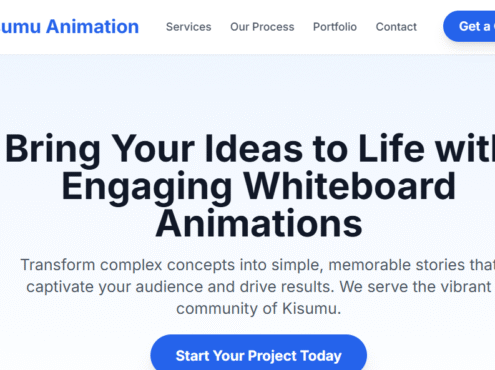Image SEO Optimization in Kenya
- Delivery Time2 Weeks
- English levelProfessional
- LocationUSA, United Kingdom, United Arab Emirates, New York, Nairobi, Kilimani, Kenya, Dubai, CBD Nairobi, Canada, Australia
Service Description
The cost of Image SEO Optimization in Kenya is 80000KES per month.Get Image SEO Optimization in Kenya at a price of 30000KES per month at Black Shepherd Technologies.
We optimize alt tags, file names, and image formats to drive traffic and improve user experience. Learn how to rank higher on Google Images.
In today’s visually-driven digital landscape, images are more than just decorative elements; they are powerful tools for driving traffic, enhancing user engagement, and boosting your website’s search engine rankings. For businesses operating in Kenya, optimizing images for search engines is a crucial but often overlooked aspect of a successful SEO strategy. This comprehensive guide will delve into the intricacies of image SEO optimization tailored specifically for the Kenyan market, explaining why it’s essential and providing a step-by-step roadmap to help you get started. From Nairobi to Mombasa and beyond, we’ll show you how to ensure your images are not only beautiful but also highly visible to search engines and potential customers.
The Power of Image SEO Optimization in Kenya: A Comprehensive Guide
In the bustling digital marketplaces of Nairobi, the vibrant tourism sector of the coast, and the growing e-commerce landscape across Kenya, businesses are constantly vying for online attention. While most focus on optimizing text-based content, a significant opportunity often goes untapped: image SEO. Image search is a powerful and increasingly popular way for users to discover products, services, and information. By effectively optimizing your website’s images, you can attract a new stream of qualified traffic, improve your site’s overall SEO health, and create a more compelling user experience. This guide will explore the what, why, and how of image SEO, with a keen focus on strategies that resonate with the Kenyan market.
Why Image SEO is Crucial for Kenyan Businesses
Kenya’s digital landscape is characterized by a high mobile penetration rate and a growing number of internet users who are highly visual in their consumption habits. Whether they are searching for the latest fashion trends in Nairobi’s boutiques, a safari lodge in the Maasai Mara, or fresh produce from a local market, users often start their journey on platforms like Google Images. For businesses, this translates to several key benefits:
Increased Organic Traffic: Well-optimized images can rank in Google Image search results, a separate but equally valuable search engine. This can be a primary source of traffic, especially for businesses in visually-rich industries like tourism, real estate, fashion, and food.
Enhanced User Experience (UX): High-quality, fast-loading images improve site speed and reduce bounce rates. Users are more likely to stay on a site that loads quickly and looks professional. In a market where mobile internet speeds can vary, this is a critical factor for retaining visitors.
Improved Overall SEO Performance: Google and other search engines reward websites that provide a good user experience. By optimizing your images, you’re not just improving image rankings; you’re also signaling to search engines that your site is high-quality, which can positively impact your overall domain authority and rankings for other keywords.
Competitive Advantage: Many Kenyan businesses have not yet fully embraced image SEO. By being one of the early adopters, you can quickly gain a significant competitive advantage over your rivals, capturing traffic and leads they are missing out on.
Essential Elements of Image SEO: A Step-by-Step Guide
Image SEO isn’t a single action; it’s a combination of best practices that work together to make your images discoverable and impactful. Here are the key elements to focus on, with examples tailored for a Kenyan context.
1. Strategic File Naming:
Before you even upload an image, its file name is your first opportunity to tell search engines what the image is about. Instead of generic names like IMG_4567.jpg, use descriptive, keyword-rich file names.
Bad Example: shoe.jpg
Good Example: kenyan-leather-sandal-nairobi.jpg
Another Good Example: maasai-mara-safari-jeep.jpg
This simple step provides context to search engines and helps them categorize your image correctly.
2. The Power of Alt Text (Alternative Text):
Alt text is perhaps the most critical component of image SEO. It’s a short, descriptive phrase that appears in place of an image if it fails to load. More importantly, it is read by screen readers for visually impaired users and is used by search engines to understand the image’s content.
Bad Alt Text: shoe or image of shoe
Good Alt Text: Handmade brown leather sandal for women, crafted in Nairobi, Kenya
Another Good Alt Text: A majestic lion pride resting under an acacia tree in the Maasai Mara National Reserve
Your alt text should be descriptive, include your target keywords naturally, and never be keyword-stuffed. It should accurately describe the image for someone who cannot see it.
3. Choosing the Right Image Format:
The format you choose can impact file size and quality. For most web images, the following formats are recommended:
JPEG (.jpg): Best for photographs and images with lots of colors, as it offers good compression and quality. Ideal for product photos or safari landscapes.
PNG (.png): Best for logos, icons, and images with transparent backgrounds. It’s lossless, meaning it retains quality but often has a larger file size.
WebP (.webp): A newer format developed by Google that provides superior lossless and lossy compression for images on the web. Using WebP can significantly reduce file size without a noticeable loss in quality, making your site load faster. Consider using it for your main product images.
4. Optimizing Image Size and Dimensions:
Large images are one of the primary culprits behind slow website loading times, a major turn-off for users and a red flag for search engines.
Resize Before Uploading: Use image editing software to resize your images to the exact dimensions they will be displayed on your website. There’s no need to upload a 4000×3000-pixel image if it will only be displayed at 800×600 pixels.
Use Compression Tools: After resizing, use image compression tools (like TinyPNG, Kraken.io, or even built-in WordPress plugins) to reduce the file size without compromising quality. Aim for a file size under 100-150KB for most images.
5. Implementing Structured Data for Images:
Structured data, or schema markup, is a powerful way to provide search engines with more context about your content. For images, this is particularly useful for product images, recipes, and videos. By adding schema, you can enable rich results, such as star ratings, prices, and availability, to appear in search results, making your listings more attractive and clickable. For a Kenyan e-commerce store, this could mean displaying the price of a kiondo basket or the rating for a specific restaurant.
6. Integrating Images into Relevant Content:
Images should not just be dropped onto a page; they should be strategically placed to complement the surrounding text. The content around your image provides additional context for search engines. If you have an image of a handmade kiondo basket, ensure it’s placed within a paragraph that talks about the craftsmanship, origin, and materials of the basket. The combination of strong surrounding text and a well-optimized image is a powerful one-two punch for SEO.
7. Leveraging Image Sitemaps:
Just like a regular XML sitemap helps search engines discover your web pages, an image sitemap helps them find and crawl your images. This is especially important for sites that use JavaScript to load images, as search engines might miss them otherwise. Including your images in a sitemap ensures they are indexed efficiently.
8. Geotagging and Local SEO:
For businesses targeting a specific location in Kenya, like a hotel in Diani or a restaurant in Karen, geotagging your images can be highly effective. Geotagging involves adding geographical information to your images’ metadata. While this is less of a direct ranking factor than other elements, it can help your images appear in local search results and Google Maps, driving foot traffic to your physical location.
Conclusion: A Picture is Worth a Thousand Clicks
In the competitive digital marketplace of Kenya, every advantage counts. Image SEO optimization is not a complex, technical endeavor reserved for large corporations; it is a practical and accessible strategy that any business can implement to drive tangible results. By dedicating time to thoughtful file naming, descriptive alt text, proper formatting, and strategic placement, you can transform your website’s images from mere decorations into powerful SEO assets.
In a country where vibrant culture, breathtaking landscapes, and innovative products are so visually compelling, it would be a missed opportunity not to leverage the power of images to tell your brand’s story. Start by optimizing your most important images today, and watch as your website’s visibility and organic traffic begin to climb, giving your business the competitive edge it needs to thrive in the Kenyan digital space








